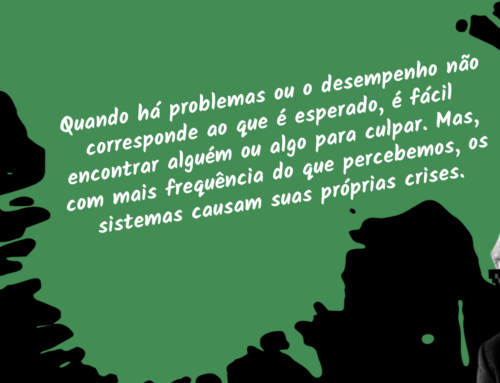I often have conversations with two types of people. Those who want to hire us to “implement” a new management system and those who criticize our own approach where we propose a framework that is suitable for all organizations.
Both couldn’t be more wrong. The reason is that we fail in the way we communicate our work.
In our workshops or when we propose the O2 Catalyst we do not present a miraculous solution in the form of a revolutionary system that is suitable for all organizations.
We introduce a new lexicon (set of words in a language) that most people don’t know yet. And through contact with this new language, each individual can learn a new vocabulary and thus profoundly change how their organizations work.
The problems and challenges still exist, but now the person can address them using a new language. More precisely, a new language of pattern. I’ll get there. First I propose a test for you to evaluate your fluency.
Tell how many terms or words in each of the lists below you have heard in your work environment in recent months:
Language 1: nested circle structure, tribal space, double linking, decision by consent, emergent strategy, domains, advice process, facilitator role, governance proposal (or structure change), evolutionary purpose, transparency, check-in, non-violent communication, circle meetings, integrating objections.
Language 2: superior/subordinate relationship, chain of command, goal setting, protecting the team, garanteeing results, giving feedback to employees, strategic planning, deadlines, incentives, bonus, rewards, career plans, budgets, performance appraisal, boss, consensus.
I bet you have familiarity with the terms of Language 2. After all it’ taught and practiced in companies and universities. Language 1 is not so popular, and even if you know some terms, they may not be present in your everyday life.
It is this little-known language that perhaps deserves the investment of your time to learn and practice more.
Pattern Language
The term Pattern Language was proposed by Christopher Alexander in the influential book A Pattern Language written in 1977. The goal was to map successful solutions to problems that occur in a given context. What defines a standard is the triad: solution , problem and context.
Applying a particular pattern doesn’t necessarily lead to the same result. It’s not a cake recipe.
In addition, a related term also appears: anti-pattern is a bad and recurring solution. It either doesn’t solve the problem or creates a resulting context with worse outcomes. Language 2 does that a lot.
In the end this is what we present. A new pattern language for the organizational world. We didn’t invent these patterns, but they emerged from experiments done by people trying to solve similar problems in organizational contexts.
They are standards that strengthen self-organization and self-management, open space for wholeness and facilitate the expression of a purpose. People who live these practices on a daily basis report that they feel more autonomous, engaged, generating more impact, agile, learning more and happier.
Learning this new language goes beyond knowing the meaning of the words. It involves practicing, similar to what we do when we start learning a new language (like English). It takes time and you only learn while you do it. Using another metaphor: it’s impossible to learn to swim before entering the water.
In workshops, we present patterns that people don’t know about. In self-management transformation processes, we are immersed in the routine of organizations helping people in their learning processes. Over time, our presence becomes unnecessary, as a sufficient number of people have learned and made use of this new language.
If new people join the organization, they will learn the language in the same way that we learn when we move to a new country. We work for these systemic changes. It’s slow, but long lasting.
How Organic Organization propagates this new language
We are in a very intense process of creating and evolving a new catalyst for self-organization, called Organic Organization (O2). For didactic purposes, O2 is divided into three different components:
- Meta-Agreements: The minimum rules for you to start playing the O2 game. It would be the materialization of the minimum patterns needed in clear principles and guidelines. Leaving plenty of room to adapt to the organizational context, but avoiding confusion about where to start and which patterns are essential. Following the rules of the Meta-Agreements allows the emergence of a powerful self-organizing meta-process.
- Pattern Library: A vast compendium of patterns and anti-patterns that can be very useful for people to draw on practices that have already worked in other organizations that have similar problems and contexts.
- Field Guide: A guide for change agents. It would be a way of presenting patterns that have arisen in processes of transition and adoption of the patterns found in O2. We know that the challenge lies in adapting to this new world and that is why we want to dedicate energy to support those who are at the forefront.
It’s impossible to copy an organization
Every organization is unique. Cultural characteristics, history, structure, context, market environment and purpose give each organization a unique identity.
Even if you wanted to copy a framework or management system from another organization, in the process of adopting practices and systems, a lot of things would be adjusted and adapted.
It is much easier to start from the premise you want to learn and use a new language of patterns. You wouldn’t ignore the experience and practice of those who came before you, nor would you fall into the illusion that it’s possible to follow a recipe.
If you want to know more about practices and pattern that are emerging in the organizational world, send us a message. Let’s have coffee.






[…] horizontal management or distributed management? Part of our work at Target Teal is to demystify these terms and ward off and phantoms, so that organizations, considering this path, can have more peace of […]
[…] deep language learning – and in the end, O2 social technology, as I understand and promote, is very much a language for […]